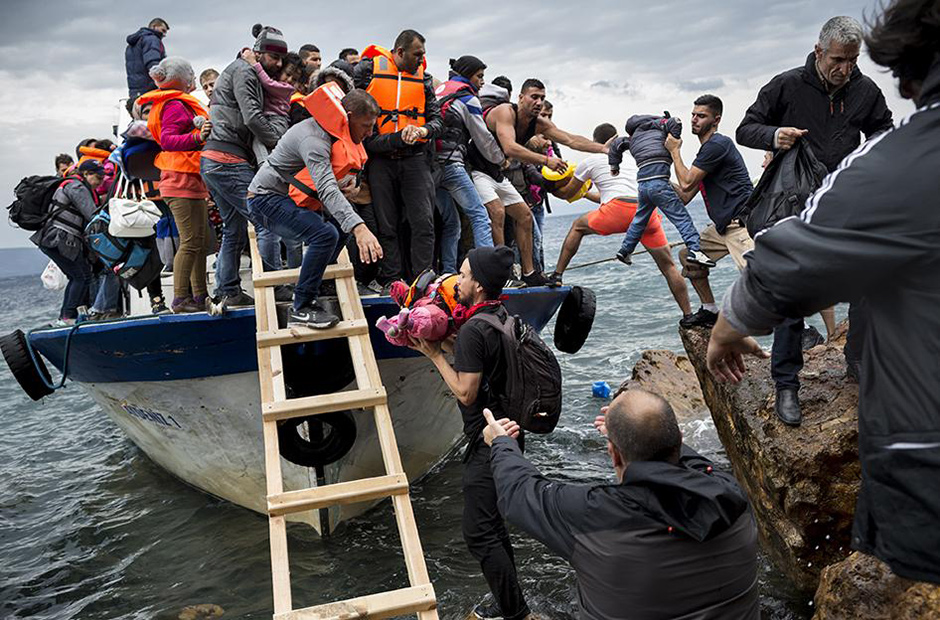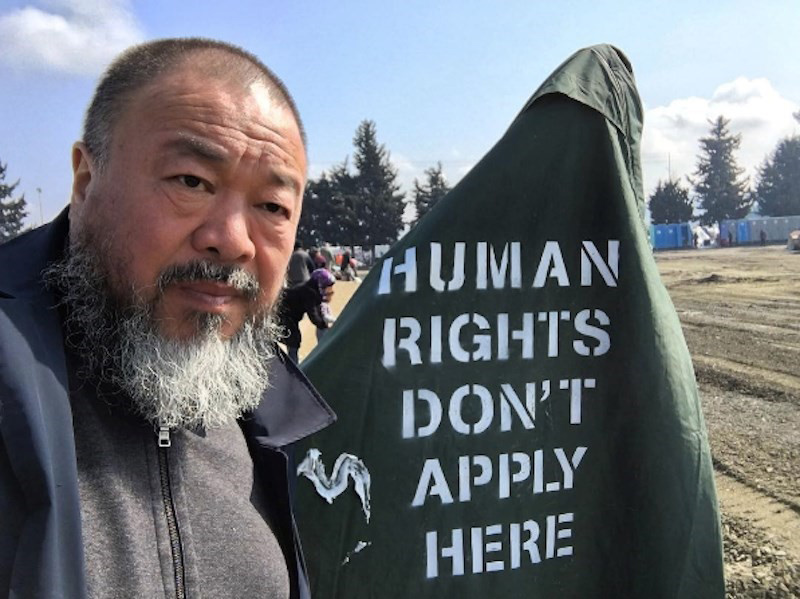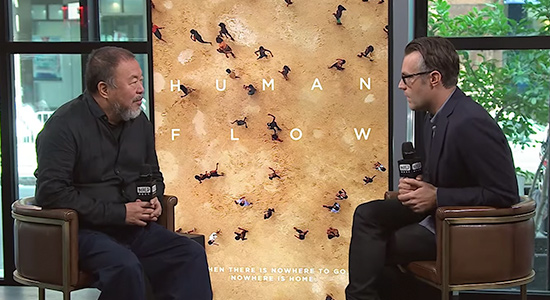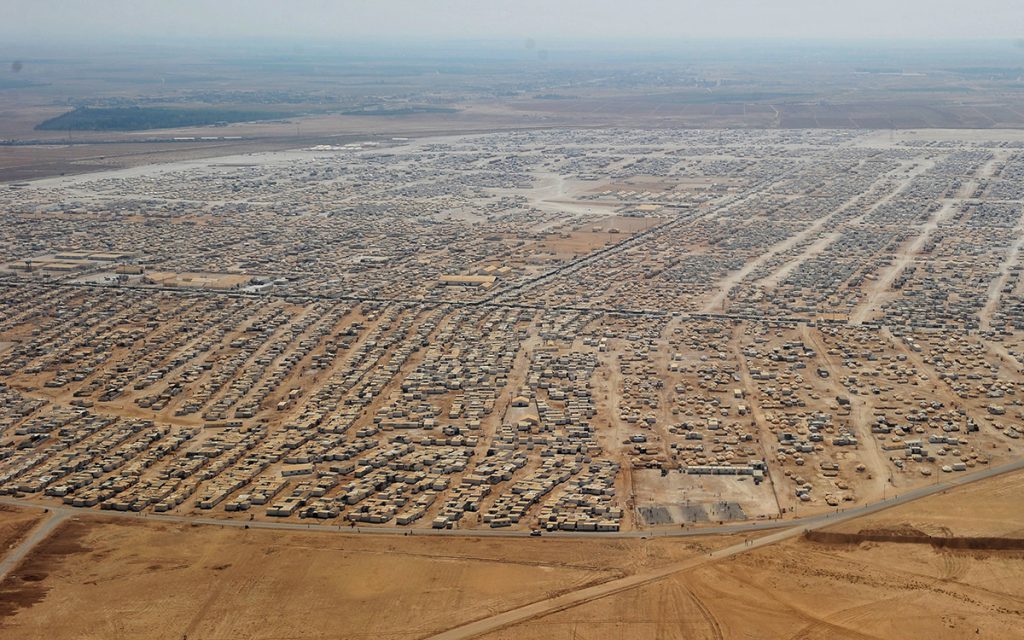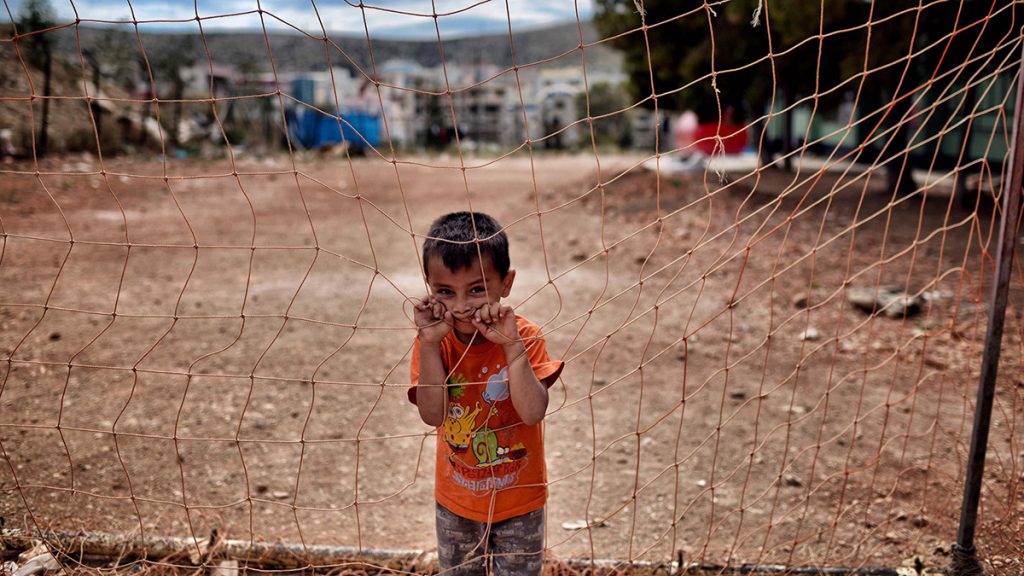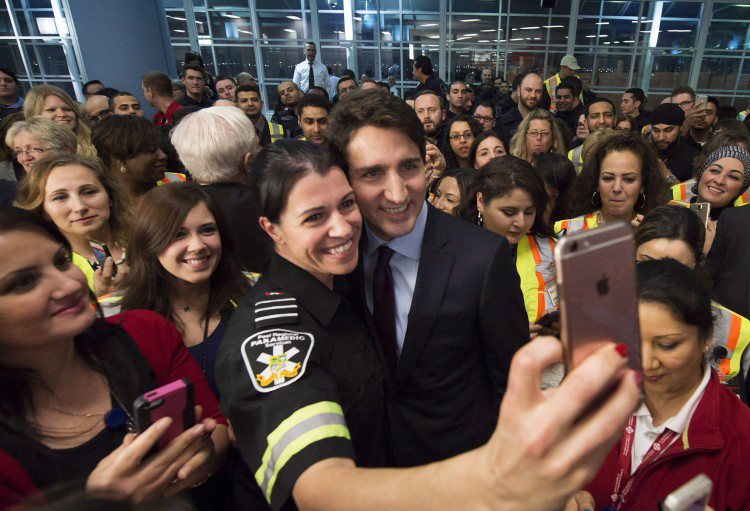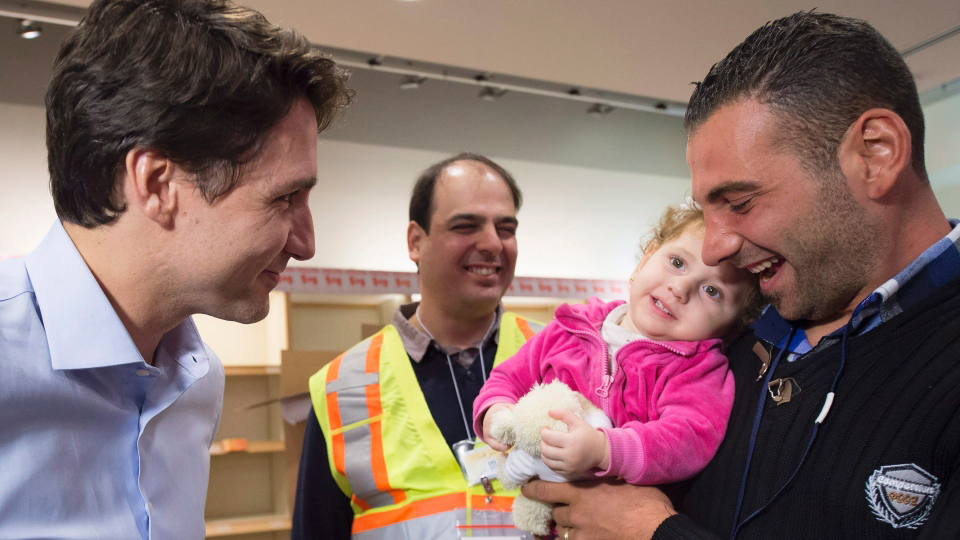Educator Tools

 Ask yourself:
Ask yourself:
- What are the responsibilities of the world’s nations for helping those in need?
- What are Canada’s responsibilities?
Today there are more refugees worldwide than at any time since World War II. After a look at the statistics, information, video links, and lessons in this chapter, you will be better equipped to analyze the challenges facing global citizens today. Many people live in desperate situations of conflict, violence, genocide, and poverty. Your own research will give you additional information about global migration today.
ACTION 1
Do
Considering Migration
Do you know what Canada does to welcome and support refugees, newcomers, and migrant workers?
The Canadian Council for Refugees and Newcomers works to help people settle in Canada. They offer free services and resources to support the rights of refugees, which includes valuable information on human rights for families and migrant workers.
Our Vision: Rights and Dignity for All!
This means:
- Giving all temporary workers access to permanent resident status, not only those coming for high-wage jobs
- Effective protection of temporary workers’ rights via legislation and enforcement
- Empowering temporary workers to seek recourse for unjust treatment through access to information, access to services, and access to justice
These guides provide information to migrant workers about available resources and to ensure their rights are being protected in Canada.
Match the items in List A with the items in List B (2022)*
| LIST A | LIST B |
|---|---|
| 727,000 | approximate number of displaced people worldwide |
| 84,000,000 | approximate population of Canada |
| 890,000 | number of temporary workers in Canada |
| >550,000 | population of world’s largest refugee camp in Bangladesh |
| 38,625,000 | approximate number of Rohingya refugees who have fled from Myanmar to Bangladesh |
*Correct answers may be found at the end of the chapter.
We have always migrated, even in the era of settlements, towns, cities, and states. Some of us travel in search of land, gold, adventure, and the dream of a better life; others to save lives.
In this unit, we have explored issues around migration, especially with groups forced out of their home countries for various reasons.
Canada has been a destination for many groups in the past few hundred years. Sometimes we welcomed immigrants; sometimes we kept them out. In many cases, people came to Canada as a station on the way to the United States. For some groups, such as escaped slaves in the 1800s, the route was from the U.S. to Canada. (see unit 1 chapter 4 The Black Experience: https://www.voicesintoaction.ca/Learn/Unit1/Chapter4)
ACTION 2
Do
Artist and activist Ai Weiwei visiting a refugee camp at the Greece/Macedonia border in 2016
http://www.scoutmag.ph/section/art-design/ai-weiwei-making-film-focusing-refugee-crisis/
To get a better idea of what groups are currently experiencing globally, watch this interview with artist and activist, Ai Weiwei, discussing his documentary Human Flow. Weiwei visited refugee camps in 23 countries and interviewed over 600 refugees in this illuminating film. The film follows a chain of urgent human stories that stretches across Afghanistan, Bangladesh, France, Greece, Germany, Iraq, Israel, Italy, Kenya, Mexico, and Turkey. The documentary is a witness to its subjects’ desperate search for safety, shelter, and justice; from teeming refugee camps to perilous ocean crossings to barbed-wire borders, from dislocation and disillusionment to courage, endurance and adaptation, and from the haunting lives left behind to the unknown potential of the future.
Ai Weiwei was born in 1957 in Beijing, China. His father was Ai Qing, a famous poet, and his mother, Gao Ying, was a writer. When Ai Weiwei was a year old, his father was named an enemy of the people and he and his family were sent to a hard labour camp in the Gobi Desert in northwest China. Ai Weiwei spent the following 16 years growing up in hard labour camps with harsh conditions and almost no formal education. When he was 19, his family returned to Beijing where he enrolled in the Beijing Film Academy to study animation. At this school, he became part of an avant-garde group of artists who came together to protest government control of the arts. Their slogan was “we demand political democracy and artistic freedom.” For further information, research his biography online.
ACTION 3
Think
There are many facts and circumstances to consider when learning about immigration, refugees, and the responsibility of each country to protect and support their own citizens and those who are displaced. Read, watch, and discuss the information below and then decide what particular topic interests you most. Research that topic by accessing a wide range of media sources.
The largest refugee camp in Jordan, Zaatari refugee camp, home to more than 80,000 displaced Syrians.
Image: REUTERS/Mandel Ngan/Pool
Source: World Economic Forum
Some good news: On November 17, 2017, Jordan inaugurated the first solar park to operate in a refugee camp at the Zaatari desert camp, home to over 80,000 displaced Syrians. If you can imagine, in addition to being a displaced refugee, females are also vulnerable to rape and assault at the hands of men in their own community. Providing 14 hours of electricity per day means that women and girls can now move about the camp more safely after dark. Germany financed the project for $17.5 million. Prior to this, the United Nations High Commissioner for Refugees (UNHCR) was providing electricity for 8 hours a day at the cost of $500,000 a month. Solar energy has no monthly cost and these extra hours of electricity means children can study at night and people can store food in refrigerators, as well as communicate with the outside world.
The Rohingyas from Myanmar
Over 700,000 Rohingya Muslims have fled violence in Myanmar (formerly Burma), mostly to makeshift camps in Bangladesh. More than half of the displaced people are children. They are an ethnic Muslim minority living in Rakhine state. They have their own language and culture and say they are descendants of Arab traders and other groups who have been in the region for generations. But, the government of Myanmar, a predominantly Buddhist country, denies the Rohingya citizenship and even excluded them from the 2014 census, refusing to recognize them as a people. It sees them as illegal immigrants from Bangladesh. Human rights groups consider them to be among the most persecuted people in the world.
Beginning in the late 1970s, Rohingya migrated from Myanmar, but violence and persecution has escalated. The exodus began on August 25, 2017 after Rohingya Arsa militants launched deadly attacks on more than 30 police posts. Rohingyas arriving in Bangladesh said they fled after troops, backed by local Buddhist mobs, responded by burning their villages and attacking and killing civilians. Amnesty International says the Myanmar military also raped Rohingya women and girls. A report published by UN investigators in August 2018 accused Myanmar’s military of carrying out mass killings and rapes with “genocidal intent.” In January 2020, the International Court of Justice’s initial ruling ordered Myanmar to take emergency measures to protect the Rohingya from being persecuted and killed.
ACTION 4
Do
Research articles online and in national papers about the plight of the Rohingyas. Choose one of the following questions and write a paper about it.
A. Why are they being persecuted?
B. Is this a genocide? Support your answer.
C. The leader of Myanmar, State Chancellor Aung San Suu Kyi received the Nobel Peace Prize. Why did she receive it and does she deserve to keep it?
D. The CMHR (Canadian Museum for Human Rights) removed Aung San Suu Kyi from their exhibit. Reference to Suu Kyi was removed from the Winnipeg museum’s timeline of human rights milestones. Her portrait in a gallery of honorary Canadians remains, but has been dimmed. What do think about this?
Get inspired to support refugees around the world. Get Involved with the Canadian Council for Refugees Youth Network!
A. If you’d like to welcome and support refugees and newcomers to Canada, check out the CCR Youth Network (established 2006) to learn more about their empowering initiatives. You can participate in online discussions, teleconferences, youth-led workshops, and strategy sessions. The Youth Network works within a gender justice and anti-oppression framework. Help give newcomer youth a voice by putting your own voice into action.
B. Watch the video of the 2019 Youth Action Gathering.
C. Take a look at some of the cartoons that teenagers created about the topic of immigration and being a newcomer to Canada.
ACTION 5
Do
Media Clipping Thesis
Much of what we know about immigration and the role governments and citizens can play comes from the media. So it’s important to learn how to analyze media treatment of the issue. A thesis is a statement about an issue supported by evidence and based on clear criteria. This can be a component of the culminating end-of-unit task to be displayed or handed in if there is a current event that has attracted the class’s interest.
A. Working either individually, in small groups, or as a whole class, select a problem or current issue in Canada today you wish to explore.
B. Collect stories, pictures, or information, about the topic over a three or four-week period from the local newspaper or other media, including appropriate online sources. Some of the websites linked to the federal government such as Parks Canada, Statistic Canada, and the National Archives may also serve as sources to investigate.
C. Prepare an analysis that might include such aspects as the following:
- historical background to the issue (as reported in the newspaper);
- the perspective(s) taken by the newspaper or other media examined;
- a weighting of the different perspectives in order to arrive at a defensible conclusion on the issue in question.
The following are just some of the topics and questions that you may use for developing theses based on readings from your local paper and other media sources.
| Topic | Critical Question |
|---|---|
| Refugees from Haiti | Should we bring them to Canada? Under what conditions? |
| Emigration | Why would people choose to leave their country or region of birth to move to a new place? |
| Immigration | Why would people choose to live in Canada? |
| Illegal Immigration | This is a serious problem. How significant is this problem for Canada? |
| Immigration Consultants | Are they a help or a hindrance to newcomers? |
| Public opinion | What does the public in your community / province / territory think of issues in immigration? What does the Canadian public think as a whole about immigration issues? |
| Role of Government | What is current government immigration policy? What influence should the provinces and territories have on immigration policy? |
| Refugees | What groups coming to Canada are claiming refugee status? How strong are the arguments for and against the admission of refugees? |
| Climate Refugees | Do they exist or is this a made up concept with no merit? |
| Refugee camps | Are these temporary or permanent solutions? What makes a camp sufficient for refugees? |
| Global migration | Where are the places where there is massive migration? Why are these migrations occurring? What can / should Canada do about the issues causing such migration? |
| Canada’s economy | Should the health of Canada’s economy affect immigration and refugee policies? |
| Border security | How secure are our borders? |
| Challenges to newcomers | What challenges do newcomers to Canada face? |
| Temporary Workers | How important are they to the Canadian economy? What are our obligations to this group? |
| Hopes and realities | What has happened to immigrants who came to Canada in the past? |
| Multiculturalism | Discuss the nature of Canadian identity. |
| Studying immigration | Is it better to study immigrants as groups of people or concentrate on individual stories to learn more about the issue? |
| The brain “gain” | By encouraging highly-skilled and educated immigrants are we damaging the home countries by taking their “best and brightest”? |
The clippings can be included as a portfolio or cited in an essay on the topic in question. Some school libraries have signed on to databases of various news media, including newspapers, magazines, television, and cable news sources. Some are free of charge such as:
You can compare daily front-page coverage of a dozen Canadian newspapers and hundreds from more than 50 countries by checking Washington’s Newseum.
The clipping thesis helps you go beyond the headlines to trace the story. If the news story is the first draft of history it will not be the last.
Online selection can be part of a “media file” to develop the clipping thesis. Here you might begin by working with your classmates to develop:
- search techniques, in addition to just “Googling”
- questions for any online investigation or web quest
- criteria for evaluating the usefulness of the website itself
As you share your work, you can discuss or write position papers (see unit overview, action 2) based on your examination of the issues shared in all of the theses.
“Immigration is critical to job creation and long-term economic growth for the middle class. In so many ways, Canada is what it is today thanks to the entreprenurial spirit of those who chose to build their lives here.” – PM Trudeau
Further Resources:
Salam Neighbor – a documentary released in 2016 by the film production companies Living on One Dollar and 1001 MEDIA. The film takes place in the largest refugee camp in Jordan and follows Syrian refugees. Watch the trailer.
A New York Times short film about Myanmar and its ethnic cleansing of the Rohingya.
Answers to Action 1 Chart – Considering Migration:
Approximate number of displaced people worldwide – 84,000,000
Approximate population of Canada – 38,625,000
Number of temporary workers in Canada – over 550,000
Population of world’s largest refugee camp – Kutupalong in Cox’s Bazaar, Bangladesh – 890,000 people
Approximate number of Rohingya refugees who have fled from Myanmar to Bangladesh – 727,000
Every effort has been made to gain permission from copyright holders to reproduce borrowed material. The publishers apologize for any errors and will be pleased to rectify them in subsequent reprints and website programming
Educator Tools


